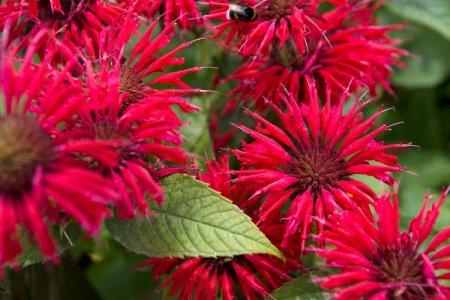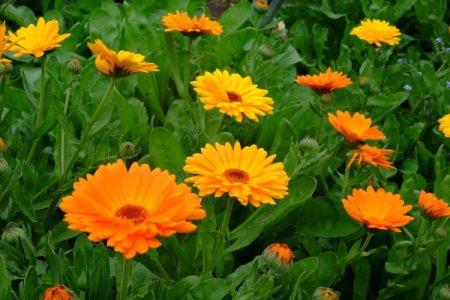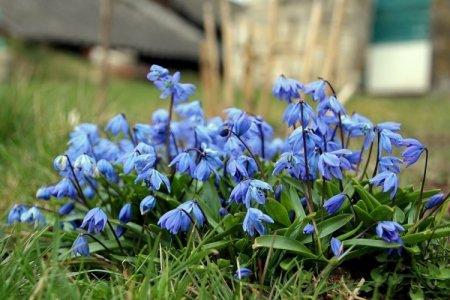
Everyone around has heard about the benefits of echinacea for health and immunity. But what do we know about this plant as a whole? Do you know why Echinacea is so popular among fans of ornamental gardening? And we have already found out!
general information
Echinacea belongs to aster, like most other flowering plants with such characteristic inflorescences-baskets. It came to us from North America, but now it is spread all over the world. It was described almost 300 years ago, and since then, echinacea has been cultivated for medicinal and decorative purposes.
Echinacea is a herbaceous perennial with thin high stems up to 1.5 m. It has wide, serrated oval leaves and large inflorescences of bright pink, white or red ligulate flowers. And the middle is dark and voluminous. Echinacea blooms from July to autumn.

Echinacea types
There are only 9 main botanical species in the Echinacea genus. The most common of these is Echinacea purpurea, but here are a few more!
Purpurea echinacea
A medicinal plant with simple straight stems up to 100 cm in height. Sometimes it stretches even higher - up to 1.5 m. It has a powerful root system, broad-lanceolate leaves and large inflorescences-baskets up to 12 cm in diameter.

Strange Echinacea
Everything in it is amazing: hollow stems, petals wrapped down and an unusual shade of oval leaves. At the same time, it is one of the most hardy species that easily adapts to any climate.

Pallid echinacea
This is a very tall species that grows up to 1.5 m under favorable conditions. Leaves and shoots have a gray tint. The diameter of pink or lilac flowers is up to 6 cm.

Narrow-leaved echinacea
It is distinguished primarily by the core rhizome. The straight dark stem is surrounded by elongated green leaves. The shade of the inflorescences is pale pink, with a brown center.

Echinacea care
On the one hand, Echinacea is not too capricious. On the other hand, it becomes so only if a number of rules are followed. The most important of them are the right choice of soil and irrigation regime!
Temperature and lighting
Echinacea feels great in spring, and the optimum temperature for germination is 12-15 degrees. She also prefers open and well-lit places.

Watering
Echinacea needs frequent and abundant watering, especially young seedlings. Take only warm, settled water, and we recommend that you do this in the evening. Then they slightly loosened the soil and got rid of the weeds along the way.

The soil
For active growth and flowering, you need a nutritious, warm and slightly alkaline or neutral soil. Very wet, acidic and sandy soil is not suitable. Dig up an area of lime before planting as needed.

Fertilizers and feeding
For the first year, the soil is well prepared. From the second, gradually feed the echinacea with compost and ash to achieve abundant flowering. Two dressings are enough - before and after flowering.

Wintering
Echinacea belongs to winter-hardy plants, but if the season is expected to be cold and snowless, the bushes can still freeze out. And young plants are generally very sensitive. To definitely avoid problems, cut off the shoots in the second half of autumn, mulch the root collar and cover everything with a layer of leaves or spruce branches.

Planting and breeding echinacea
You can plant seeds, but it is much more effective and convenient to use vegetative methods. For planting germinated seedlings, small holes up to 5 cm deep with a distance of 30 cm from each other are needed. Add some compost to the bottom before planting.
If you are planting delenki, then select the size of the hole for its rhizome. The procedure is carried out in April or during the autumn leaf fall. Only bushes older than 4-5 years old are divided.
If you still propagate by seeds, sow them in the spring immediately on the site, when the temperature is about 12-13 degrees. Sprinkle lightly with soil and be patient, because the first shoots can appear only after 1.5 months. During the first year, only the leaf rosette itself is formed.

Pest and disease control
The two most dangerous diseases of echinacea are jaundice and mosaic. Most often, aphids and other sucking insects carry them, so take care of prevention. The diseases themselves cannot be cured, and a deformed plant with yellowed veins or chaotic pale spots must be removed.
From fungi, troubles arise from septoria, gray rot, phyllostictosis and fusarium. Fortunately, there is no need to understand the intricacies, because there is only one mechanism. Inspect the plantings, remove all suspicious plant parts and use fungicides.
With a small infestation of aphids, a soap solution will cope. It is better to collect beetles and caterpillars by hand first. But if there are too many pests, it is better not to waste time and immediately use chemicals.

Echinacea - photo
Spectacular echinacea looks very bright in the garden, but at the same time elegant. It goes well with other plants in group plantings and is good on its own!




























